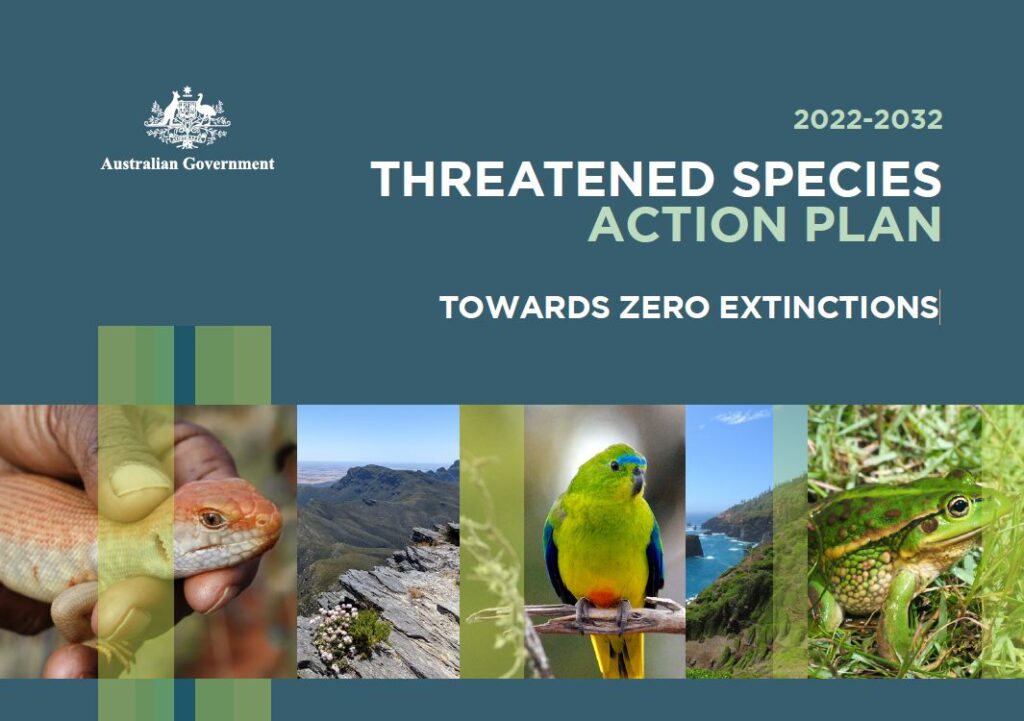Four local marine species listed in Action Plan
By Iain Watt, President EcoNetwork, Vice-President Marine Parks Association.
The ‘Threatened Species Action Plan: Towards Zero Extinctions 2022-2032’ released on 4 October 2022 prioritises 110 lucky species and 20 priority places for conservation. There are currently 1,958 listed threatened species in Australia. This approach is intended to drive action where it is needed most and it is hoped will deliver flow-on benefits to other threatened plants and animals in the same habitats.

Of these 110 prioritised species and 20 priority places, only 8 species are marine species and of those, the waters of the Port Stephens Great Lakes Marine Park has the rather ignominious honour of hosting four of them. These are:
- Grey nurse shark (Carcharias taurus)
- Cauliflower soft coral (Dendonephthya australis)
- White’s seahorse (Hippocampus whitei)
- Green turtle (Chelonia mydas)
Of the 20 priority places, only one marine priority place is listed, the Giant kelp (Macrocystis pyrifera) ecological community of Tasmania, which is disappearing due to climate change and taking an entire ecological community with it. This case could be argued for the Great Barrier Reef but coral and other marine habitat didn’t make the cut. Presumably they fall under another Action Plan. It is hoped that the dots are being joined up somewhere.
The problem with marine ecosystem and species conservation is that collecting sufficient robust data to be able to judge the status of marine ecosystems, habitat and species health is logistically complex. It is this lack of data that results in some marine communities and species to be ignored until it’s too late.
The Threatened Species Action Plan was released on 4 October 2022 to very little fanfare despite the dire straits that Australian biodiversity finds itself. Since colonisation, Australia has lost to extinction more than 100 species and more mammals than any other continent. And those are only the species we know about.
The definition of a threatened species is any plant or animal that is at risk of extinction. There are 1,958 plants and animals listed as threatened on the national registry – 556 fauna species and 1,402 flora species. 1000 of these are listed in NSW.
This new Action Plan is based on the results of the State of the Environment Report 2021 which revealed that the Australian environment is in bad shape and getting worse, if that is possible. It aims to address the growing threats and challenges to biodiversity and will build on the previous Threatened Species Strategy Action Plan 2021 – 2026, which presumably did not fair too well under the State of the Environment Report.
And while we wait, Australian native wildlife and ecosystems continue to be threatened by climate change, invasive species, human activity such as land clearing – and apathy.
The Action Plan attempts to map a pathway to recovery for threatened wildlife in terrestrial, marine and freshwater environments over the next 10 years. It has four 10-year objectives that will be met through consecutive 5-year targets and actions, with 22 targets for the first 5 years of the plan.
The targets address a range of issues and could be considered quite ambitions. These include areas managed for conservation to be increased by 50 million hectares (Target 6) and ensuring that national conservation planning for threatened species and ecological communities is contemporary, effective and fit-for-purpose (Target 18). Target 22 recognises the value of citizen science and community engagement but does not identify mechanism or funding to ensure this works.
The Action Plan focusses on increasing terrestrial areas managed for conservation, because Australia’s national network of marine parks (made up of state, territory and federal government marine parks) already covers 45 per cent (around 4 million square kilometres) of Australian waters. However, it could be argued that this system is dysfunctional and does not deliver on its objectives and are largely paper parks.
However, apparently the need and scope for increasing levels of protection within the marine park network will be considered as part of the 10-yearly statutory review processes established for national and state marine park management plans . It is under this state jurisdiction that the 10 year NSW Marine Parks Management Plan Review sits. This process already does not meet Target 18, a review process that would appear to be neither contemporary, effective nor fit for purpose.
While the new Action Plan is complementary to the Federal Environment Protection and Biodiversity Conservation Act 1999, it does not introduce any new obligations on individuals, organisations or governments. So ultimately, how will this plan actually work?
Government under this plan aims to prevent new extinctions and to conserve 30 per cent of the land area, incorporating all representative habitat and a similar 30 per cent of the oceans by 2030. The Government also supports the development of an ambitious Post-2020 Global Biodiversity Framework to halt and reverse biodiversity loss by 2030.
Given that 4 of the 8 marine species listed as priority species are present in the Port Stephens waters, it would be interesting to know what is planned through local action plans to protect these threatened species in the Port Stephens Great Lakes Marine Park.
Let’s hope that this 2022 – 2032 action plan has more success than its forebears.
